
Shrubs Around Las Vegas, Vegetation Around Las Vegas
 |
General: The Rabbitbrushes (Chrysothamnus spp. and Ericameria spp.) are upright, usually at least thigh-high shrubs with green stems and small leaves that produce dense, yellow flowerheads at the top of the shrub during fall. There are a number of common species of rabbitbrush in Nevada. Two of the more common rabbitbrush species that occur in the mountains of southern Nevada are Rubber Rabbitbrush (Ericameria nauseosa) and Yellow Rabbitbrush (Chrysothamnus viscidiflorus). In the desert habitats of southern Nevada, look for Narrowleaf Goldenbush (Ericameria linearifolia) and Turpentine Bush (Ericameria laricifolia) in hills and rocky areas, and look for Mojave Rabbitbrush (Ericameria paniculata) in desert washes. Members of the genus Ericameria are separated from those in the genus Chrysothamnus by the presence or absence of dense, woolly hairs on the stems (Ericameria has them). In general, Ericameria has phyllaries arranged in spirals, whereas Chrysothamnus has phyllaries arranged in vertical ranks. |
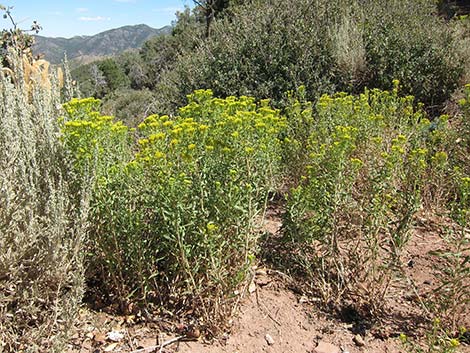 |
Rabbitbrush often are a common component of vegetation communities from the lower elevation the Lower Sonoran (Mojave Desert Scrub) life zone to the Transition (Yellow Pine Forest) life zone. Some Rabbitbrush species thrive in disturbed areas, so keep an eye out along roadsides such as those on Mt. Charleston (Rubber Rabbitbrush). Family: Sunflower (Asteraceae). Other Names: Each species has a common name. Plant Form: Upright shrub with many, green stems Height: Usually knee- to waist-high, occasionally head-high. Bark: New bark is green; older bark is light gray. |
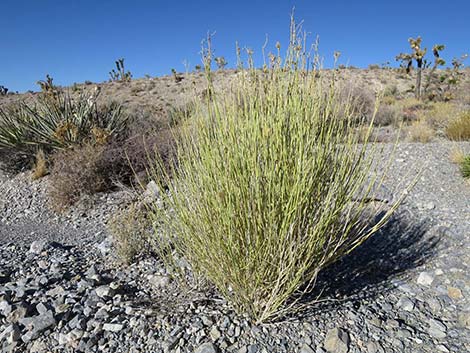 |
Stems: Erect. Leaves: Narrow (to 3 inches long and 1/3 inch wide), green. Flowers: Blooms in the fall. Inflorescence: many dense heads of tiny yellow flowers, sometimes covering the entire top of the shrub. Ripens to brown, fluffy flowerheads atop the plant. Seeds: Small, hairy achene (like a tiny sunflower seed). |
 |
Habitat: Sandy and gravelly soils in and along washes. Elevation: 3,000 to 10,000+ feet Distribution: Western North America from British Columbia to Baja California. Comments: |
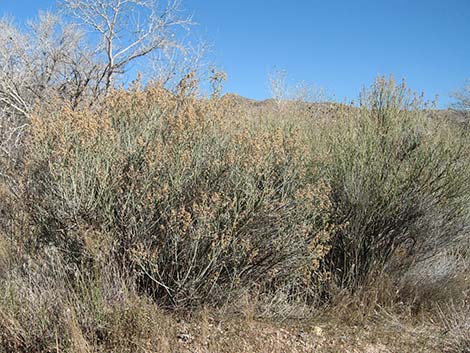 |
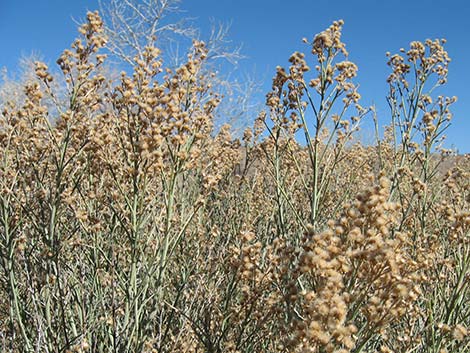 |
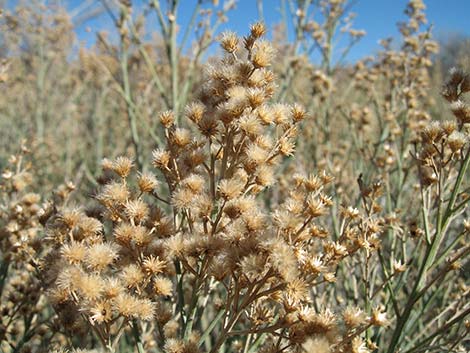 |
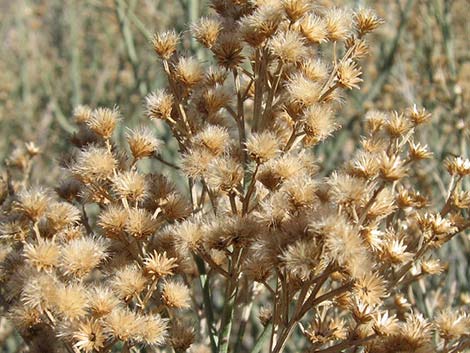 |
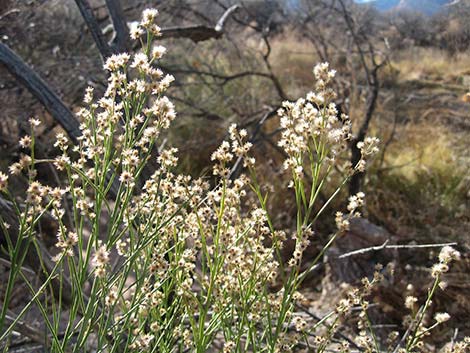 |
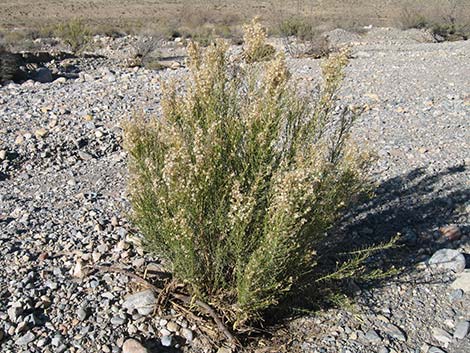 |
 |
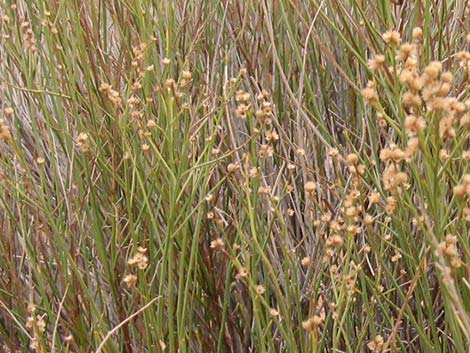 |
Note: All distances, elevations, and other facts are approximate. Names generally follow the USDA database.
![]() ; Last updated 220113
; Last updated 220113
| All Shrubs | Plant Species Index | Glossary | Copyright, Conditions, Disclaimer | Home |